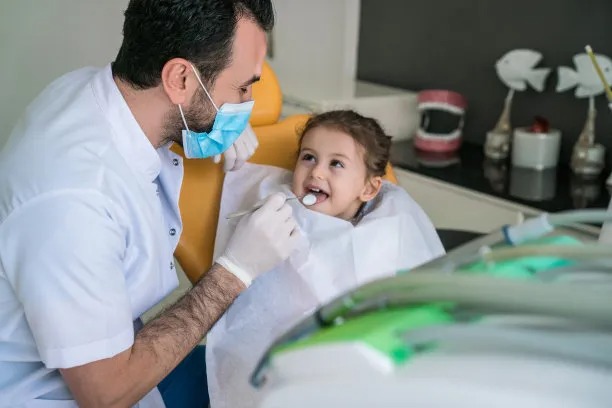The Essential Guide to Extracting a Tooth Safely and Effectively for Improved Dental Health
Summary: This article presents a comprehensive guide to the process of tooth extraction, emphasizing safety and effectiveness to enhance dental health. It details the preparation, procedure, post-operative care, and the importance of professional assistance, ensuring that readers are well-informed on how to navigate tooth extraction responsibly. Understanding these key aspects is essential for anyone considering the procedure, focusing on methods that mitigate discomfort and promote healing. With the right approach, tooth extraction can lead to improved dental well-being and confidence in oral health.
1. Preparing for a Tooth Extraction

Preparation is critical for a successful tooth extraction. Patients should begin by consulting with their dentist, who will assess the tooths condition and discuss potential risks involved. A thorough examination, often including X-rays, may be necessary to understand the tooths position and the surrounding structures. Getting a clear picture allows the dentist to devise a tailored extraction plan that takes into account the patient’s specific dental anatomy.
Another important aspect of preparation involves discussing medical history with your dentist. This includes informing them of any existing health conditions, medications youre taking, and allergies. Transparency ensures that the dental team can take necessary precautions to avoid complications during the procedure. Additionally, receiving instructions on fasting, medication adjustments, and transport arrangements can enhance the overall experience.
Lastly, emotional preparedness is equally essential. Many people experience anxiety over dental procedures. Therefore, considering relaxation techniques like deep breathing or listening to calming music can make a significant difference. Understanding the process ahead can ease apprehensions and foster a positive outlook towards the extraction.
2. The Tooth Extraction Procedure
The actual tooth extraction process typically begins with local anesthesia to numb the area around the tooth, ensuring minimal discomfort. In some cases, sedation may be recommended to help manage anxiety, especially for complex extractions or for patients with a dental phobia. This step is crucial, as proper anesthesia is the foundation for a pain-free experience.
Once the area is numb, the dentist uses specialized tools to loosen the tooth from its socket gently. The technique employed may vary between simple and surgical extractions, depending on whether the tooth is visible or impacted. In surgical cases, a small incision might be made in the gum tissue, and bone may need to be removed before the tooth can be extracted. Clear communication with the dentist during this step can help patients feel more comfortable and informed.
After the tooth has been successfully removed, pressure is applied to the extraction site using gauze. This helps to minimize bleeding and initiate formation of a blood clot, which is crucial for healing. If needed, stitches might be placed to promote healing, depending on the complexity of the extraction. Following this, the dentist will provide specific aftercare instructions to aid recovery.
3. Post-Extraction Care for Healing
Post-extraction care is key to facilitating a smooth recovery. It is vital to follow all aftercare instructions provided by the dentist. These usually include guidelines on pain management, typically recommending over-the-counter pain relievers or prescribed medications to manage discomfort effectively.
Another essential aspect of recovery involves dietary adjustments. For the first few days following the extraction, it’s advisable to consume soft foods and avoid any hot, spicy, or crunchy items that may irritate the extraction site. Staying hydrated while avoiding any straws is also crucial, as suction can dislodge the blood clot and lead to complications like dry socket.
Patients should monitor their recovery for any signs of infection or excessive bleeding, such as increased pain or swelling, which may necessitate a follow-up with their dentist. Regularly scheduled check-ups also help in ensuring that the healing process is on track and that any concerns are addressed promptly.
4. Importance of Professional Dental Assistance
Engaging a professional for tooth extraction is essential for ensuring safety and effectiveness. Dentists are trained to handle any complications that may arise, including excessive bleeding or infection. Their expertise also extends to understanding when extraction is necessary versus other treatment options such as root canal therapy.
Additionally, professionals utilize advanced tools and techniques that are important for a successful extraction. They have the ability to assess the best approach to minimize discomfort and provide tailored care based on their patients unique situation. Their experience allows for quick responses to unforeseen issues that may develop during the extraction process.
Finally, ongoing support and aftercare from a dental professional significantly enhance recovery outcomes. Regular follow-ups and the ability to quickly address post-extraction concerns ensure that patients are guided through the healing process effectively. Overall, trusting the expertise of dental professionals not only simplifies the extraction experience but also contributes to holistic dental health.
Summary:
In this article, we gained insight into the critical components of tooth extraction, emphasizing the need for adequate preparation, an understanding of the extraction procedure, diligent post-extraction care, and the necessity of professional dental assistance. Each element plays a vital role in ensuring the patient has a safe and effective experience, ultimately improving their dental health.
This article is compiled by Vickong Dental and the content is for reference only.



